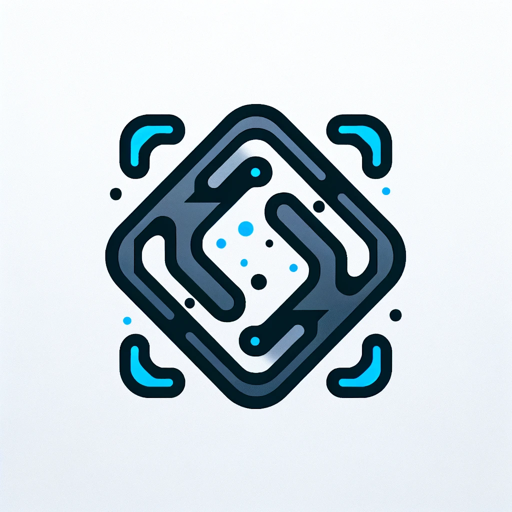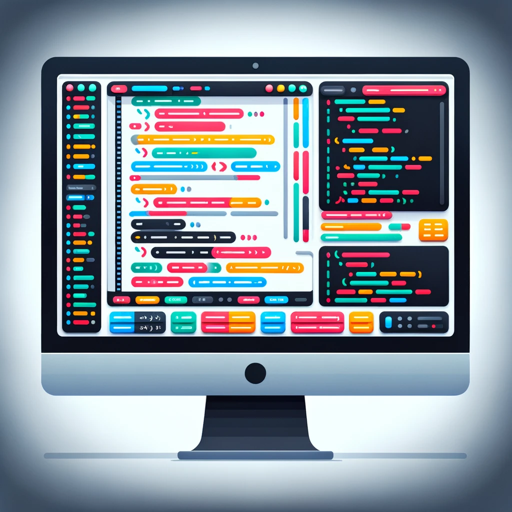ROS2 Coding Companion-ROS2 Development and Coding Aid
AI-powered assistance for ROS2 development
Help me set up a ROS2 node.
How can I improve this ROS2 code?
Generate a ROS2 configuration for a mobile robot.
Explain this ROS2 function to me.
Related Tools
Load More
ROS Assistance
Expert in ROS1 and ROS2, ready to assist with all ROS-related queries.
RoboLOx
This Gpts main purpose is too serve you in roblox studio creating high end roblox scripts too finish your game whether its complex or simple it can handle it

Ros2
Expert in ROS 2 actions and robotics applications

Code Companion
I'm a Python specialist here to help you code and learn! | Proficient in all coding languages, web design & much more!

Code Companion
I provide full code snippets, optimized for performance and high quality code.

Code Companion
I offer clear code solutions with brief explanations.
20.0 / 5 (200 votes)
Introduction to ROS2 Coding Companion
The ROS2 Coding Companion is designed as a specialized assistant for developers, engineers, and researchers working with the Robot Operating System (ROS2), particularly in the context of building robotic systems. Its primary function is to assist users in generating, analyzing, and optimizing ROS2 code, including nodes, configurations, and system architectures. This tool is tailored to handle the specific needs of ROS2 development by providing accurate and relevant information, code snippets, and recommendations. For example, if a user is developing a ROS2 node to control a robotic arm, the ROS2 Coding Companion can generate the basic structure of the node, suggest the appropriate ROS2 interfaces (such as publishers, subscribers, or action servers), and even offer advice on best practices for managing node lifecycle and error handling. Additionally, it can review existing code to identify potential issues or inefficiencies, making it a valuable tool throughout the development lifecycle.

Key Functions of ROS2 Coding Companion
Code Generation
Example
Generating a basic ROS2 node with publisher and subscriber functionality.
Scenario
A developer needs to create a ROS2 node that reads sensor data from a topic and publishes processed data to another topic. The ROS2 Coding Companion can generate a template for this node, including the necessary boilerplate code, ROS2-specific headers, and example callback functions. This saves time and ensures that the node follows ROS2 conventions.
Code Review and Optimization
Example
Reviewing a ROS2 node's code to identify potential performance bottlenecks or errors.
Scenario
An engineer has written a complex ROS2 node that performs real-time data processing. The ROS2 Coding Companion can analyze the code to detect issues such as inefficient memory usage, blocking operations in callbacks, or improper use of ROS2 services. The tool then provides suggestions for optimizing the code to improve performance and reliability.
ROS2 API Guidance
Example
Providing detailed information on specific ROS2 APIs and their usage.
Scenario
A researcher is unfamiliar with a particular ROS2 API, such as `rclcpp::TimerBase`. They can query the ROS2 Coding Companion to get a detailed explanation of the API, including usage examples, typical scenarios where it is used, and any important considerations or caveats. This helps users quickly understand how to implement the API in their projects.
Ideal Users of ROS2 Coding Companion
ROS2 Developers
This group includes software developers who are actively building or maintaining ROS2-based systems. They benefit from the ROS2 Coding Companion by receiving code generation assistance, detailed API information, and optimization tips that help streamline their development process and ensure they follow best practices in ROS2 development.
Robotics Researchers and Academics
Researchers working on advanced robotics projects often need to prototype and test algorithms in a ROS2 environment. The ROS2 Coding Companion aids this group by providing quick access to accurate information, generating code templates for experiments, and offering insights into the latest ROS2 functionalities. This accelerates their research by reducing the time spent on low-level implementation details.

Steps for Using ROS2 Coding Companion
1
Visit aichatonline.org for a free trial without login; there's no need for ChatGPT Plus to start.
2
Ensure you have a clear understanding of the specific ROS2 task you want to accomplish, such as generating skeleton nodes, configuring ROS2 components, or debugging code.
3
Interact with ROS2 Coding Companion by asking detailed technical questions or requesting code generation. Be specific about your needs to get the most accurate and relevant advice or code snippets.
4
Use the provided code snippets or advice in your ROS2 projects, and integrate them into your existing codebase. Make sure to test and verify functionality within your development environment.
5
For optimal results, iteratively refine your queries based on the responses, and use the companion's suggestions to enhance your ROS2 project progressively.
Try other advanced and practical GPTs
Front-End Standards Buddy
AI-powered solutions for modern web development.

Drama Life Sim| scheduler| planner|time manager
AI-powered planner that turns daily tasks into dramatic adventures.

Snoop Image Ai
Authenticity Redefined: AI-Powered Image Analysis

Designer's Assistant
AI-powered creative design assistant

Retro Cartoon Generator
AI-Powered Retro Cartoon Creations

Gollum
Refine your writing with AI precision.

Ghostwriters
AI-Powered Book Writing Made Easy

Math Wizard
AI-powered solutions for all your math needs.

Hub Helper Harry
AI-powered HubSpot assistant for streamlined business processes.

Pharma Research Pro
AI-Driven Insights for Pharma Research

Movie Maestro
Smart AI movie recommendations for every taste.

Authority Forge | Infographic Designer 🎨
Create stunning infographics with AI power.

- Debugging
- Code Generation
- Project Assistance
- API Reference
- Learning ROS2
Common Questions about ROS2 Coding Companion
What can ROS2 Coding Companion help me with?
ROS2 Coding Companion assists with a variety of ROS2-related tasks, including generating skeleton nodes, configuring launch files, debugging code, and understanding ROS2 APIs. It's particularly useful for developers building complex robotics systems.
Do I need any special software or accounts to use ROS2 Coding Companion?
No, you don't need any special software or accounts. You can access ROS2 Coding Companion directly via the web, and no ChatGPT Plus subscription is required.
Can ROS2 Coding Companion help with understanding ROS2 Humble APIs?
Yes, ROS2 Coding Companion can provide detailed information about ROS2 Humble APIs, including references to specific functions and files. It's an excellent resource for diving into the technical details of the ROS2 Humble distribution.
Is ROS2 Coding Companion suitable for beginners?
While it's geared towards developers with some ROS2 experience, beginners can also benefit by receiving detailed explanations and code examples that help them learn ROS2 concepts and best practices.
How does ROS2 Coding Companion handle updates to ROS2?
ROS2 Coding Companion is regularly updated to reflect the latest changes in the ROS2 ecosystem, including new distributions, features, and API updates, ensuring you always get accurate and up-to-date information.